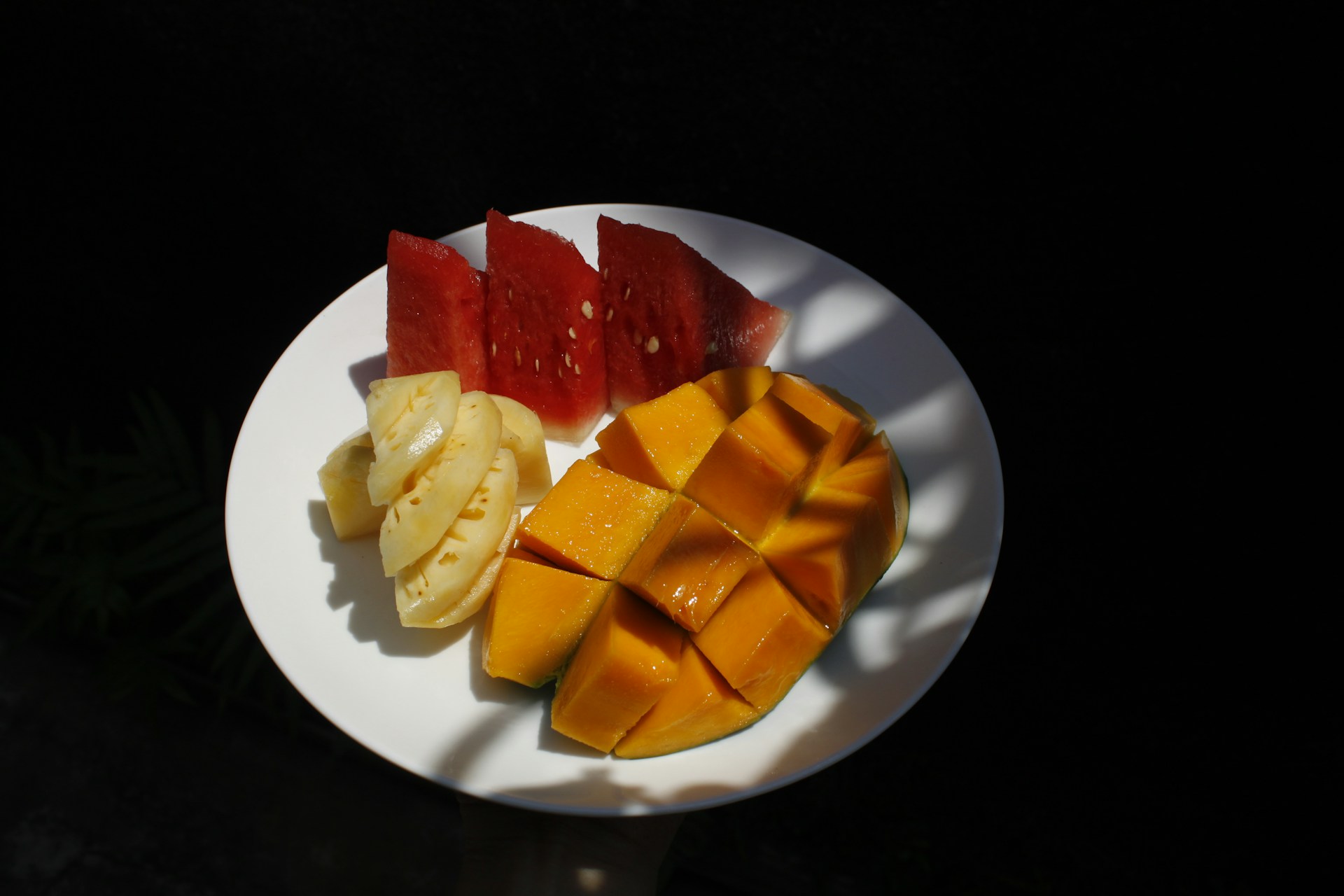The Effectiveness of Positive Deviance Hearth (Pos Gizi) to Improve Malnourished Children in Urban Surabaya, Indonesia
Efektifitas Positive Deviance Hearth (Pos Gizi) untuk Perbaikan Anak Kurang Gizi di Perkotaan Surabaya, Indonesia

Downloads
Background: Positive Deviance Heart (PDH) focuses on processes identifying affordable, acceptable, and sustainable practices used in communities with limited resources. One of PDH's goals is to prevent malnutrition in children by changing societal norms regarding parenting behavior, feeding practices, and health care behavior.
Objectives: This study aimed to determine the effectiveness of PDH implementation in urban areas by assessing nutritional status alteration and changes in child feeding practices.
Methods: This quantitative study with a descriptive-analytic approach used secondary data from a three-month PDH intervention conducted by Wahana Visi, Indonesia. Locations and participants were determined by a purposive sampling method. Twenty-nine (29) participants from three urban villages in Surabaya were involved. Data analysis was performed using frequency distribution, ANOVA, and Chi-square test (95% Confidence Interval).
Results: The PDH implementation in Simokerto Sub-district did not significantly improve the children's nutritional status. Changes in child feeding practices during the Hearth did not significantly affect children's nutritional status (p>0.05). There were differences (p<0.05) in Z-score alteration based on the time of weighing with or without considering the age groups and the children's residence (p<0.05).
Conclusions: The three-month PDH sessions in the Simokerto Sub-district have not been effective in increasing the target of nutritional status. Changes in child feeding practices were not associated with increased children's nutritional status. Based on the time of weighing, the PDH's intervention periods can improve the target of nutritional status.
United Nations DESA. THE 17 GOALS | Sustainable Development. Sustainable Development at (2016).
UNICEF. Unicef's Approach to Scaling Up Nutrition. UNICEF's Approach to Scaling Up Nutr. Mothers Their Child. (2015).
World Health Organization. Global Strategy for Infant and Young Child Feeding. Fifthy-Fourth World Health Assembly (2003).
Bhutta, Z. A. et al. Evidence-Based Interventions for Improvement of Maternal and Child Nutrition: What Can Be Done and at What Cost? The Lancet, 382 (2013).
Gibney, G. Positive Deviance & Hearth: Suatu Pendekatan Perubahan Perilaku dan Pos Gizi. Nutr. Work. Gr. Child Surviv. Collab. Resour. Gr. 204 (2004).
Headey, D. et al. Impacts of COVID-19 on Childhood Malnutrition and Nutrition-Related Mortality. The Lancet, 396 (2020).
Ministry of Health of Indonesia. Buku Saku Hasil Studi Status Gizi Indonesia (SSGI) Tahun 2022. Kemenkes RI (2022).
SSGI. Kuesioner Studi Status Gizi Indonesia 2021. Kementerian Kesehatan Republik Indonesia Badan Penelitian d0an Pengembangan Kesehatan Riset Kesehatan Nasional Studi Status Gizi Indonesia 2021 Kuesioner Individu at (2021).
Wahana Visi Indonesia. Laporan Gizi-Pd Hearth Kecamatan Simokerto. (2022).
Ministry of Health of Indonesia. Report of The Pos Gizi Assessment: Suggestions for Expanding the Approach in Indonesia. (2008).
Klaas, N., Baik, D. & Mcnulty, J. Training of Master Trainers for Positive Deviance/Hearth. (2014).
Surabaya. Buku Pedoman Pelaksanaan Pos Gizi untuk Kader di Surabaya. (2016).
Permenkes Republik Indonesia. Permenkes No 2 Tahun 2020 Tentang Standar Antropometrik Anak. Kementeri. Kesehat. Republik Indones. 28, (2020).
World Health Organization. Indicators for Assessing Infant and Young Child Feeding Practices: Part 1 Definitions. World Health Organization (2008).
Ministry of Health of Indonesia. Pedoman Pemberian Makan Bayi dan Anak (PMBA). Kementrian Kesehat. RI xix + 129 (2020).
Minani, G., Habtu, M. & Rutayisire, E. Effect of Positive Deviance Hearth Intervention on Acute Malnutrition Persistence among Children under Five in Burera District, Rwanda. Rwanda J. Med. Heal. Sci. 5, (2022).
Kang, Y., Kim, S., Sinamo, S. & Christian, P. Effectiveness of a Community-Based Nutrition Programme to Improve Child Growth in Rural Ethiopia: A Cluster Randomized Trial. Matern. Child Nutr. 13, (2017).
Kim, Y. et al. Age Differences in the Impact of a Positive Deviance/Hearth Programme on the Nutritional Status of Children in Rural Bangladesh. Public Health Nutr. 24 (2021) doi:10.1017/S1368980021003189.
Reinhardt, K. & Fanzo, J. Addressing Chronic Malnutrition through Multi-Sectoral, Sustainable Approaches: A Review of the Causes and Consequences. Frontiers in Nutrition, 1 (2014).
Kurniasari, R. Pemberian Makan Bayi dan Anak (PMBA) pada Masa Pandemi Covid-19. J. ABDIMAS Kesehat. Tasikmalaya 1, (2020).
Irianto, S. E., Bohari, F. H. & Sefa, N. Positive Deviance Approach-Nutritional Center in Improving Nutritional Behavior Towards Toddler Survivors of Natural .... J. Crit. Rev. 7, (2020).
Roche, M. L. et al. A Community-Based Positive Deviance/Hearth Infant and Young Child Nutrition Intervention in Ecuador Improved Diet and Reduced Underweight. J. Nutr. Educ. Behav. 49, (2017).
Miller, A. L., Miller, S. E. & Clark, K. M. Child, Caregiver, Family, and Social-Contextual Factors to Consider when Implementing Parent-Focused Child Feeding Interventions. Current Nutrition Reports, 7 (2018).
Ministry of Health of Indonesia. Pedoman Pelatihan Konseling Pemberian Makan Bayi Dan Anak (PMBA). (2019).
WHO; MIYCF. Essential Nutrition Actions Improving Maternal, Newborn, Infant and Young Child Health and Nutrition. WHO Library Cataloguing (The WHO Document Production Services, Geneva, Switzerland, 2013).
Ministry of Health of Indonesia. Materi Peserta : Modul Pelatihan Konseling Pemberian Makan Bayi dan Anak. Kementeri. Kesehat. RI (2017).
Headey, D., Hirvonen, K. & Hoddinott, J. Animal Sourced Foods and Child Stunting. Am. J. Agric. Econ. 100, (2018).
Zaharia, S. et al. Sustained Intake of Animal-Sourced Foods is Associated with Less Stunting in Young Children. Nat. Food 2, 246–254 (2021).
Adesogan, A. T., Havelaar, A. H., McKune, S. L., Eilittä, M. & Dahl, G. E. Animal Source Foods: Sustainability Problem or Malnutrition and Sustainability Solution? Perspective Matters. Global Food Security, 25 (2020).
Sekartaji, R. et al. Dietary Diversity and Associated Factors Among Children Aged 6–23 Months in Indonesia. J. Pediatr. Nurs. 56, (2021).
Kotseva, K., Wood, D. & De Bacquer, D. Determinants of Participation and Risk Factor Control According to Attendance in Cardiac Rehabilitation Programmes in Coronary Patients in Europe: Euroaspire IV survey. Eur. J. Prev. Cardiol. 25, (2018).
Beal, T., Tumilowicz, A., Sutrisna, A., Izwardy, D. & Neufeld, L. M. A Review of Child Stunting Determinants in Indonesia. Maternal and Child Nutrition, 14 (2018).
Weatherspoon, D. D., Miller, S., Ngabitsinze, J. C., Weatherspoon, L. J. & Oehmke, J. F. Stunting, Food Security, Markets and Food Policy in Rwanda. BMC Public Health 19, (2019).
Gebremedhin, S. et al. Predictors of Dietary Diversity in Children Ages 6 to 23 Mo in Largely Food-Insecure Area of South Wollo, Ethiopia. Nutrition 33, (2017).
Victor, R., Baines, S. K., Agho, K. E. & Dibley, M. J. Factors Associated with Inappropriate Complementary Feeding Practices Among Children Aged 6-23 Months in Tanzania. Matern. Child Nutr. 10, (2014).
Dafursa, K. & Gebremedhin, S. Dietary Diversity among Children Aged 6-23 Months in Aleta Wondo District, Southern Ethiopia. J. Nutr. Metab. 2019, (2019).
Mahmudiono, T., Sumarmi, S. & Rosenkranz, R. R. Household Dietary Diversity and Child Stunting in East Java, Indonesia. Asia Pac. J. Clin. Nutr. 26, (2017).
WHO. Infant and Young Child Feeding: Model Chapter for Textbooks for Medical Student and Allied Health Professional). WHO Press (WHO Press, 2009).
Rahmadiyah, D. C. & Astuti Yuni, N. Pengalaman Keluarga dalam Praktik Pemberian Makan Pendamping ASI pada Balita Gizi Kurang. J. Ilm. Permas J. Ilm. STIKES Kendal 11, (2021).
Gebru, N. W., Gebreyesus, S. H., Yirgu, R., Habtemariam, E. & Abebe, D. S. The Relationship Between Caregivers' Feeding Practices and Children's Eating Behaviours Among Preschool Children in Ethiopia. Appetite 157, (2021).
Gobbi, P. E. Childcare and Commitment Within Households. J. Econ. Theory 176, (2018).
Cherchye, L., Chiappori, P.-A., de Rock, B., Ringdal, C. & Vermeulen, F. Feed the Children. SSRN (2021).
Taneja, S. et al. Impact of an Integrated Nutrition, Health, Water Sanitation and Hygiene, Psychosocial Care and Support Intervention Package Delivered During the Pre- and Peri-Conception Period and/or During Pregnancy and Early Childhood on Linear Growth of Infants in the First Two Years of Life, Birth Outcomes and Nutritional Status of Mothers: Study Protocol of a Factorial, Individually Randomized Controlled Trial in India. Trials 21, (2020).
Kusumawardani, L. H., Rasdiyanah, R., Rachmawati, U., Jauhar, M. & Desy Rohana, I. G. A. P. Community-Based Stunting Intervention Strategies: Literature Review. Dunia Keperawatan J. Keperawatan dan Kesehat. 8, (2020).
Waller, A., Lakhanpaul, M., Godfrey, S. & Parikh, P. Multiple and Complex Links Between Babywash and Stunting: An Evidence Synthesis. Journal of Water Sanitation and Hygiene for Development, 10 (2020).
UNICEF. Conceptual Framework on Maternal and Child Nutrition. Nutr. Child Dev. Sect. Program. Gr. 3 United Nations Plaza New York, NY 10017, USA (2021).
Copyright (c) 2023 Amerta Nutrition

This work is licensed under a Creative Commons Attribution-ShareAlike 4.0 International License.
AMERTA NUTR by Unair is licensed under a Creative Commons Attribution-ShareAlike 4.0 International License.
1. The journal allows the author to hold the copyright of the article without restrictions.
2. The journal allows the author(s) to retain publishing rights without restrictions
3. The legal formal aspect of journal publication accessibility refers to Creative Commons Attribution Share-Alike (CC BY-SA).
4. The Creative Commons Attribution Share-Alike (CC BY-SA) license allows re-distribution and re-use of a licensed work on the conditions that the creator is appropriately credited and that any derivative work is made available under "the same, similar or a compatible license”. Other than the conditions mentioned above, the editorial board is not responsible for copyright violation.












































